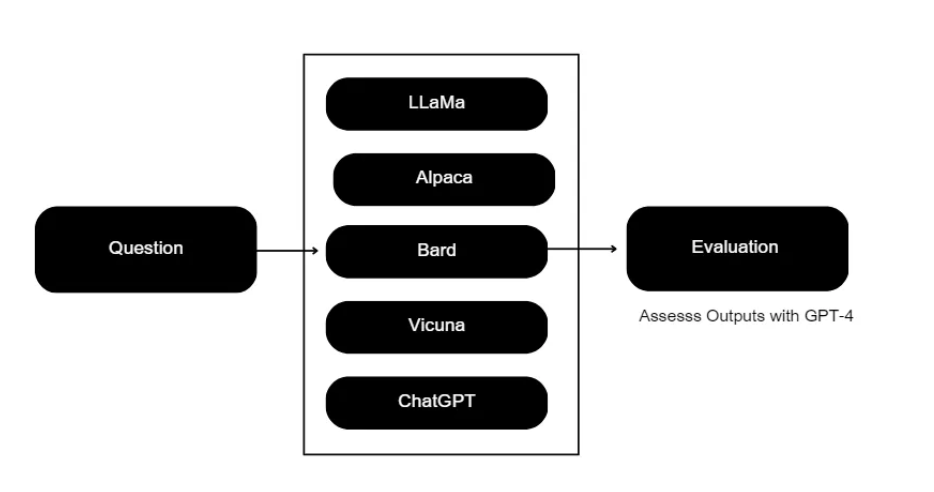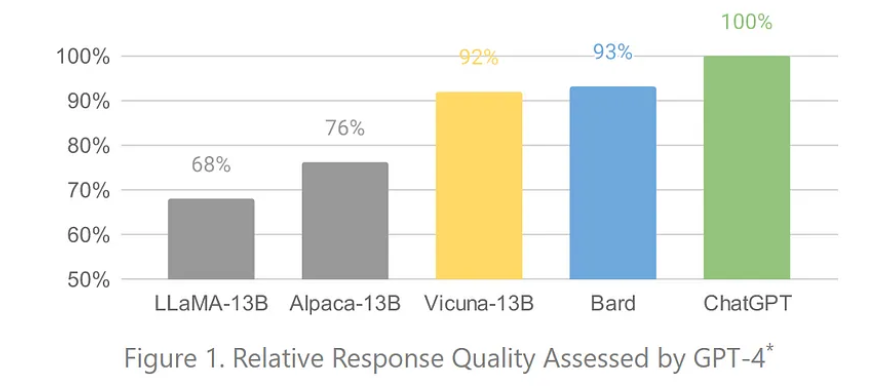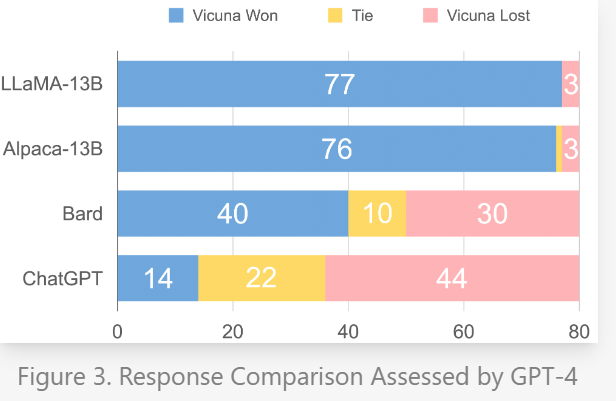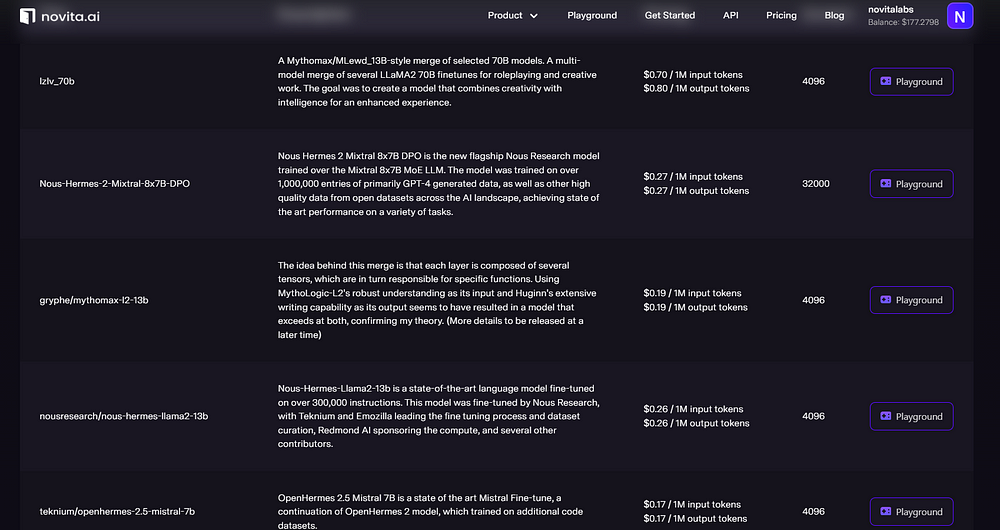Explore the breakthroughs of Vicuna-13B, an open-source chatbot fine-tuned on human conversations. Discover its performance metrics, comparison with major models like GPT-4, and its wide-ranging applications in industries from customer support to healthcare. Learn about the potential of integrating LLM APIs with Alpaca LLM for enhanced AI development.
Background
Large Language Models (LLMs) are sophisticated AI systems capable of understanding and processing human language, developed using deep learning techniques and trained on vast datasets. These models have risen to prominence, with GPT-4, a notable transformer model launched in March 2023, powering OpenAI’s ChatGPT chatbot. This chatbot can generate text that closely resembles human writing and can respond to questions effectively.
A collaborative team from UC Berkeley, CMU, Stanford, and UC San Diego has developed an open-source chatbot named Vicuna, which consists of 13 billion parameters. Vicuna was fine-tuned on a base model called LLaMA, utilizing around 70,000 user-generated conversations from ShareGPT.com accessed via public APIs. In evaluations using GPT-4 as a benchmark, Vicuna-13B has shown to maintain over 90% of the quality when compared to OpenAI’s ChatGPT and Google’s Bard. Additionally, it has outperformed other models like LLaMA and Stanford Alpaca in more than 90% of tests.
Understanding Vicuna
Vicuna-13B is an open-source chatbot developed by fine-tuning the LLaMA model with user-contributed conversations from ShareGPT. Initial evaluations with GPT-4 as the benchmark indicate that Vicuna-13B delivers quality exceeding 90%* of that provided by OpenAI’s ChatGPT and Google Bard. Moreover, it surpasses other models such as LLaMA and Stanford Alpaca in over 90%* of comparisons. The training cost for Vicuna-13B was approximately $300. The source code, model weights, and a live demo are freely accessible for non-commercial purposes.

Significance of Vicuna in Natural Language Processing Research
The Vicuna model stands out in the field of natural language processing (NLP) research as it is among the first open-source large language models (LLMs) that leverages human-generated data to produce coherent and inventive text. It represents an evolution of the Alpaca model, employing the Transformer architecture and fine-tuned with a dataset comprising human conversations. This enhancement makes Vicuna an invaluable resource for developing sophisticated chatbots and for research into LLMs. Additionally, Vicuna’s open-source nature marks a significant advancement in NLP by making advanced language models more available to the public, which could yield numerous benefits. Unlike Vicuna, where details such as the dataset, training code, evaluation metrics, and training costs are transparent, similar information is not readily available for other models like Bard or ChatGPT.
Introduction to LLaMA
Since Vicuna is based on LLaMA 13B model, it is essential to know what is LLaMA. Meta AI’s LLaMA (Large Language Model Meta AI), launched in February 2023, is a significant development in the NLP field. It comes with 13 billion parameters and exhibits outstanding performance across numerous NLP benchmarks, competing with top-tier models like PaLM and Chinchilla.
The LLaMA suite includes several models tailored for specific uses: the LLaMA 13B model is an all-around performer suitable for a range of tasks including text generation and language translation; the LLaMA 7B model, which is less computationally demanding, fits simpler applications; and the LLaMA 65B model, designed for handling more complex challenges, excels in tasks requiring greater computational power. Each variant is purpose-built to cater to different requirements, from running chatbots to translating languages.
How does Vicuna work
Vicuna operates using a framework that builds upon existing principles of large language models (LLMs), particularly the Transformer architecture. Here’s a breakdown of how Vicuna typically functions:
Base Model and Architecture: Vicuna is based on the LLaMA model, which utilizes the Transformer architecture. Transformers are renowned for their ability to handle sequences of data, making them ideal for processing natural language.
Fine-Tuning on Specific Data: Unlike models trained from scratch, Vicuna is fine-tuned on a specialized dataset. This dataset consists of human-generated conversations, which were collected and shared publicly through platforms like ShareGPT.com. Fine-tuning allows Vicuna to adapt the general capabilities of the LLaMA model to more specialized tasks like conversational AI.
Training Process: During fine-tuning, the model adjusts its internal parameters to minimize the difference between its outputs and the expected outcomes defined by the dataset. This process involves adjusting weights through backpropagation based on the errors in output, effectively making the model better at predicting or generating text that resembles the training data.

4. Performance and Evaluation: Vicuna has been evaluated against benchmarks and other models such as GPT-4 and Google Bard. In these evaluations, it has shown to achieve a high degree of fidelity and performance, maintaining over 90% of the quality of these leading models in terms of generating coherent and contextually appropriate responses.
5. Open-Source and Accessibility: Vicuna is open-source, meaning that its code, training methods, and parameters are available publicly. This transparency encourages further research and development within the community, allowing others to replicate, improve, or adapt the model for different purposes.
6. Applications: Due to its ability to generate human-like text and its adaptability through fine-tuning, Vicuna is well-suited for a variety of applications including but not limited to chatbots, language translation services, and other NLP tasks that require understanding and generating human language.
By leveraging the advanced capabilities of the Transformer architecture and fine-tuning on a specific dataset, Vicuna is able to provide a versatile and powerful tool for NLP tasks, contributing significantly to advancements in the field of artificial intelligence.
Why Vicuna Stands Out Among Other models
Training data
Vicuna was developed by fine-tuning it on 70,000 conversations shared by users through ShareGPT, a Chrome extension that enables the sharing of ChatGPT interactions. Utilizing this dataset, the team constructed the chatbot on top of Stanford’s Alpaca framework, incorporating enhancements like memory optimization, the ability to manage multi-round conversations, and reductions in operational costs.

Performance
To evaluate the performance of chatbots, eight different question categories were established, with ten questions in each category posed to five chatbots: LLaMA, Alpaca, ChatGPT, Bard, and Vicuna. The responses from these chatbots were then assessed using GPT-4, which rated the quality of each response based on various criteria.

Quality
Vicuna achieved a quality score exceeding 90% in comparison to ChatGPT and Google Bard and surpassed both LLaMA and Stanford Alpaca in more than 90% of evaluations. Additionally, with a training expense of approximately $300, Vicuna offers an economical option for chatbot development.

While using GPT-4 to assess this may not be the most scientific approach, the development of a thorough and standardized evaluation system for chatbots remains a challenging issue that warrants additional research.

User Cases and Applications
Vicuna, as an advanced chatbot based on fine-tuning the LLaMA model, offers a variety of use cases and applications across different sectors. Here are some of the prominent ones:
Customer Support: Vicuna can be deployed to automate customer service interactions, providing quick responses to frequently asked questions, resolving common issues, and routing more complex queries to human agents. This reduces wait times and improves customer satisfaction.
Virtual Assistance: In personal and professional settings, Vicuna can function as a virtual assistant, managing schedules, sending reminders, handling email queries, and even booking appointments, leveraging its natural language processing capabilities to interact seamlessly with users.
Content Creation: Vicuna can assist in generating written content such as articles, reports, and marketing copy, helping creators with brainstorming ideas, drafting outlines, and providing initial content drafts.
Language Translation: Given its training on diverse linguistic data, Vicuna can be utilized for real-time language translation services, helping to break down language barriers in communication.
Educational Tools: In educational environments, Vicuna can be used to develop tutoring systems that provide explanations, solve problems, and interact in a conversational manner with students, thereby enhancing learning experiences.
Accessibility Technologies: Vicuna can be integrated into applications that assist individuals with disabilities by enabling voice-to-text functionalities or reading text aloud, making technology more accessible.
Healthcare Assistance: It can also be applied in healthcare settings to provide preliminary medical advice, help with patient management, and assist in patient education by answering common health-related queries.
Research and Data Analysis: Researchers can use Vicuna to sift through large volumes of text data, extract relevant information, summarize research papers, and even generate hypotheses based on existing data trends.
Entertainment and Social Interaction: Vicuna can power interactive storytelling applications or games where dynamic conversation and character development are key elements, providing users with a more engaging experience.
Enterprise Solutions: Businesses can use Vicuna to automate internal operations, such as HR inquiries, IT support, and compliance training, making internal processes more efficient.
Vicuna’s versatility and adaptability make it suitable for a wide range of applications, showcasing the potential of large language models to revolutionize various industries by enhancing interactions and processes through natural language understanding and generation.
Integrating LLM APIs with Vicuna LLM
Integrating LLM APIs with Vicuna LLM opens up new opportunities for developers in the AI community. This integration allows developers to leverage the capabilities of Alpaca LLM and access a wide range of functionalities for their applications.
Here is a Real-World Examples of Successful Integrations:

The integration of novita.ai LLM API with Vicuna LLM brings several benefits for developers. These include improved developer experience, access to reliable and efficient language understanding, and the opportunity to enhance the functionality of their applications. By integrating novita.ai LLM API with Vicuna LLM, developers can streamline their development process, reduce the time and effort required for building language understanding models, and leverage the power of Vicuna LLM for their specific use cases.
Conclusion
The development of Vicuna-13B represents a significant leap forward in the field of natural language processing (NLP). As an open-source model fine-tuned on human-generated conversations, Vicuna not only stands as a testament to the versatility and effectiveness of large language models but also democratizes access to advanced AI technologies. Its performance, maintaining over 90% of the quality compared to established models like GPT-4 and Google Bard, underscores its robustness and potential for diverse applications ranging from customer support to healthcare. Moreover, the integration of LLM APIs with systems like Vicuna LLM further amplifies the possibilities for developers, enhancing their ability to create sophisticated applications tailored to various needs. As such, Vicuna exemplifies how open-source initiatives can drive innovation, foster community collaboration, and lead to transformative changes across multiple sectors.
Originally published at novita.ai
novita.ai, the one-stop platform for limitless creativity that gives you access to 100+ APIs. From image generation and language processing to audio enhancement and video manipulation,cheap pay-as-you-go , it frees you from GPU maintenance hassles while building your own products. Try it for free.

